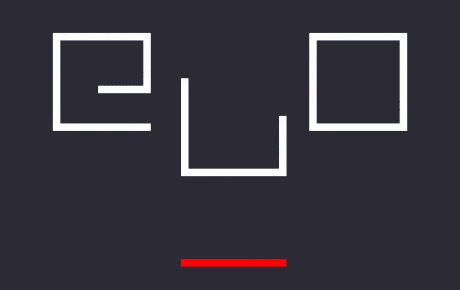Readers of print conventionally ignore the page surface so as to concentrate on interpreting what is printed there; in "open.ended," by contrast, surfaces are integral. Readers interact with lines of poetry that appearon two translucent shapes—one nested within the other. Because words on the inner shape are visible through the outer one, the printed lines can be read together or separately. The number of possible surface/text combinations is limited, but by merging shapes a surprising range of new stanzas can result. The reader can also control her angle of view so that more than one surface is visible, though all the words may not be legible. As the surfaces obscure the words, the materiality of the digital shapes overcomes linguistic signification. This phenomenon of surface overcoming text also occurs when the shapes overlap and obscure portions of the text. "open.ended" amounts to a poem without beginning or end since one does not move through the text in any predetermined order, yet the poetic object has boundaries delimited by the eight rotating surfaces. The reader's interaction with the shifting text is augmented—and usefully constrained—by an audio track of the author reading so that we, reading to ourselves, are reminded of lines from the poem we have already encountered, or we are given a preview of text to come. Despite the literal instability of the moving text, the audio track is the same each time, which lends consistency to repeated readings.
open.ended
Source Database:
ELD
Source Entry URL:
Source Entry OAI-PMH Identifier:
oai:directory.eliterature.org:45
Source Entry Language(s):
English
Description(s):







